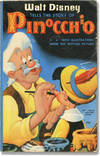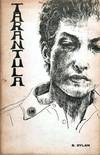
Ars Magna Sciendi, In XII Libros digesta. Qua Nova & Universali Methodo Per Artificiosum Combinationum contextum de omni re proposita plurimis & prope infinitis rationibus disputari, omniumque summaria quædam cognitio compari potest..: Athanasius Kircher: The Man who tried to Know All things!
by Kircher, Athansius Kircher 1602-1680
- Used
- Condition
- See description
- Seller
-
PRINCETON, Massachusetts, United States
Payment Methods Accepted
About This Item
Amsterdam: Apud Joannem Janssonium à Waesberge, & Viduam Elizei Weyerstraet, 1669. It is bound in full original calf with a gilt spine with an expertly executed early rebacking. Nothing is more beautiful than know all things" The 'Ars Magna Sciendi' is Kircher's exploration and development of the 'Combinatoric Art' of Raymond Lull, the thirteenth century philosopher. Kircher attempts in this monumental work to classify knowledge under the nine ideal attributes of God, which were taken to constitute the pattern for all creation. In the third chapter of this book is presented a new and universal version of the Llullistic method of combination of notions. Kircher seems to be convinced that the Llullistic art of combination is a secret and mystical matter, some kind of esoteric doctrine. In contrast with Llull, who used Latin words, words with clearly defined significations for his combinations, Kircher began filling the tables with signs and symbols of a different kind. By doing this Kircher was attempting to penetrate symbolic representation itself. (forming a 'symbolic-Logic)
Kircher tried to calculate the possible combinations of all limited alphabets (not only graphical, but also mathematical). He considered himself a grand master of decipherment and tried to (and thought he did) translate Egyptian hieroglyphic texts, he felt that knowledge was a process of encoding and decoding. His tabula generalis, the more mathematical way of thinking created the great difference between Llull and Kircher.
Kircher used the same circle-figures of Llull, but the alphabet which Kircher proposes as material for his combination-machine reveals the difference to Llullus' at first sight. It is not the signification in correlation with the position in the table, because all nine places in each table are filled with the same significations we find in the Llullistic tables, that makes the difference. It is the notation, which creates the difference. While making certain modifications, mainly in the interest of clarity, Kircher retains the main thesis of Raymond Lull in the search for a scientific approach to the classification of all branches of knowledge. The central aim of Llull's and Kircher's activity was to invent a type of logic or scientific approach capable of finding and expressing universal truth. Kircher and his seventeenth century contemporaries had discarded common language as a satisfactory vehicle for this undertaking. Kircher favored the use of symbols as a possible solution to his problem, which he had explored in his earlier work on a non-figurative universal language was not a primary concern of lull's 'Combinatoric Art,' his approach lent itself naturally to the seventeenth century savants and their abiding interest in this subject. (see Brian L. Merrill, Athansius Kircher An Exhibition at Brigham Young University).
De Backer-Sommervogel vol IV col.1066. no. 28; Merrill 22; Ferguson I. 467; Brunet III, 666; Caillet II, 360.5771; Clendening 10.17; De Backer I, 429-30.23; Graesse IV, 21; Reilly #26. Folio, 14 1/2 X 9 inches. First edition. *4, **4, A-Z4, Aa-Gg4-Zz4, Aaa-Ooo4, Ppp6. In this copy the following illustrations appear: On the frontice of part one The Greek inscription, at the foot of the throne on which the Divine Sophia sits, translates as "Nothing is more beautiful than to know the all." Next there is a full page engraved portrait of Leopold I; next full paged plate of the 'Arbor Philosophica two engraved plates with six parts to make two volvelles (at pages 13 and 173 respectively) the vovelle plates are present', and five double paged tables. There are also numerous engravings and woodcuts throughout the text. This copy is complete.
Kircher tried to calculate the possible combinations of all limited alphabets (not only graphical, but also mathematical). He considered himself a grand master of decipherment and tried to (and thought he did) translate Egyptian hieroglyphic texts, he felt that knowledge was a process of encoding and decoding. His tabula generalis, the more mathematical way of thinking created the great difference between Llull and Kircher.
Kircher used the same circle-figures of Llull, but the alphabet which Kircher proposes as material for his combination-machine reveals the difference to Llullus' at first sight. It is not the signification in correlation with the position in the table, because all nine places in each table are filled with the same significations we find in the Llullistic tables, that makes the difference. It is the notation, which creates the difference. While making certain modifications, mainly in the interest of clarity, Kircher retains the main thesis of Raymond Lull in the search for a scientific approach to the classification of all branches of knowledge. The central aim of Llull's and Kircher's activity was to invent a type of logic or scientific approach capable of finding and expressing universal truth. Kircher and his seventeenth century contemporaries had discarded common language as a satisfactory vehicle for this undertaking. Kircher favored the use of symbols as a possible solution to his problem, which he had explored in his earlier work on a non-figurative universal language was not a primary concern of lull's 'Combinatoric Art,' his approach lent itself naturally to the seventeenth century savants and their abiding interest in this subject. (see Brian L. Merrill, Athansius Kircher An Exhibition at Brigham Young University).
De Backer-Sommervogel vol IV col.1066. no. 28; Merrill 22; Ferguson I. 467; Brunet III, 666; Caillet II, 360.5771; Clendening 10.17; De Backer I, 429-30.23; Graesse IV, 21; Reilly #26. Folio, 14 1/2 X 9 inches. First edition. *4, **4, A-Z4, Aa-Gg4-Zz4, Aaa-Ooo4, Ppp6. In this copy the following illustrations appear: On the frontice of part one The Greek inscription, at the foot of the throne on which the Divine Sophia sits, translates as "Nothing is more beautiful than to know the all." Next there is a full page engraved portrait of Leopold I; next full paged plate of the 'Arbor Philosophica two engraved plates with six parts to make two volvelles (at pages 13 and 173 respectively) the vovelle plates are present', and five double paged tables. There are also numerous engravings and woodcuts throughout the text. This copy is complete.
Reviews
(Log in or Create an Account first!)
Details
- Bookseller
- James Gray Bookseller
(US)
- Bookseller's Inventory #
- 722
- Title
- Ars Magna Sciendi, In XII Libros digesta. Qua Nova & Universali Methodo Per Artificiosum Combinationum contextum de omni re proposita plurimis & prope infinitis rationibus disputari, omniumque summaria quædam cognitio compari potest..
- Author
- Kircher, Athansius Kircher 1602-1680
- Format/Binding
- It is bound in full original calf with a gilt spine with an expertly executed early rebacking
- Book Condition
- Used
- Quantity Available
- 1
- Publisher
- Apud Joannem Janssonium à Waesberge, & Viduam Elizei Weyerstraet
- Place of Publication
- Amsterdam
- Date Published
- 1669
- Weight
- 0.00 lbs
- Keywords
- Jesuit number theory
- Bookseller catalogs
- 17th century;
Terms of Sale
James Gray Bookseller
30 day return guarantee, with full refund including shipping costs for up to 30 days after delivery if an item arrives misdescribed or damaged.
About the Seller
James Gray Bookseller
Biblio member since 2009
PRINCETON, Massachusetts
About James Gray Bookseller
For the last 30 years I have been selling Early Printed Books.I have a daily rare book blog at www.Jamesgray2.wordpress
Glossary
Some terminology that may be used in this description includes:
- Folio
- A folio usually indicates a large book size of 15" in height or larger when used in the context of a book description. Further,...
- Spine
- The outer portion of a book which covers the actual binding. The spine usually faces outward when a book is placed on a shelf....
- Plate
- Full page illustration or photograph. Plates are printed separately from the text of the book, and bound in at production. I.e.,...
- New
- A new book is a book previously not circulated to a buyer. Although a new book is typically free of any faults or defects, "new"...
- Gilt
- The decorative application of gold or gold coloring to a portion of a book on the spine, edges of the text block, or an inlay in...
- First Edition
- In book collecting, the first edition is the earliest published form of a book. A book may have more than one first edition in...
- Calf
- Calf or calf hide is a common form of leather binding. Calf binding is naturally a light brown but there are ways to treat the...








